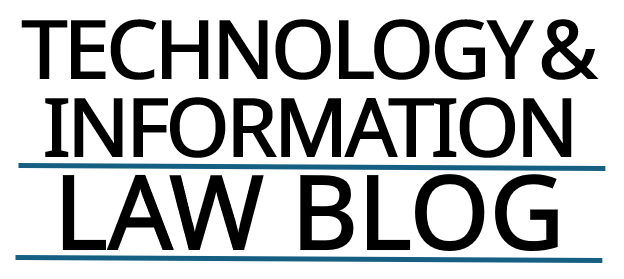In its recent decision Broadband iTV, Inc. v. Amazon.com, Inc., the Federal Circuit affirmed a summary judgment ruling that all asserted claims from five patents were directed to patent-ineligible subject matter under 35 U.S.C. § 101. The opinion, authored by Judge Reyna, offers a comprehensive application of the Alice two-step framework and reiterates that automation of known practices and abstract ideas remains outside the bounds of patentable subject matter—even when dressed up with user interface features and layered templates.
The Patents at Issue
The dispute involved five patents, four of which were from a common family (the ’026, ’388, ’750, and ’751 patents) generally relating to electronic programming guides for video-on-demand (VOD) systems. The fifth, the unrelated ’825 patent, focused on dynamically adjusting the guide based on a viewer’s history to minimize keystrokes.
The Federal Circuit treated claim 1 of the ’026 and ’825 patents as representative. Claim 1 of the ’026 patent recited a “templatized” electronic program guide created from metadata uploaded by content providers and layered with background, template, and content elements. The ’825 patent’s claim 1 described reordering categories in a viewer-specific guide based on usage history, with claim 15 adding a step of generating new categories.
Step One: Abstract Ideas Remain Abstract
Applying Alice step one, the court agreed with the district court that the ’026 patent family was directed to “receiving metadata and organizing the display of video content based on that metadata”—a formulation akin to what the court previously found abstract in Electric Power Group v. Alstom, 830 F.3d 1350 (Fed. Cir. 2016), and In re TLI Communications, 823 F.3d 607 (Fed. Cir. 2016).
BBiTV leaned heavily on Core Wireless Licensing v. LG Electronics, 880 F.3d 1356 (Fed. Cir. 2018), and Data Engine Technologies v. Google, 906 F.3d 999 (Fed. Cir. 2018), arguing that the claims improved user interface functionality. The panel rejected that analogy, distinguishing those decisions as involving specific technological solutions rather than content arrangement based on metadata—a practice deemed more akin to “organizing information,” not an inventive UI architecture.
For the ’825 patent, the Federal Circuit found the claims directed to the abstract idea of “collecting and using a viewer’s video history to suggest categories of video content”—essentially targeted advertising. As in Intellectual Ventures I v. Capital One, 792 F.3d 1363 (Fed. Cir. 2015), and Free Stream Media Corp. v. Alphonso, 996 F.3d 1355 (Fed. Cir. 2021), the court reaffirmed that tailoring content based on prior interactions is a longstanding commercial practice and abstract even if done digitally.
Step Two: No “Significantly More”
At Alice step two, the court found no inventive concept that transformed the abstract ideas into patent-eligible applications. BBiTV pointed to automatic generation of displays from templates, a content management server, and user-specific guide generation. But the court concluded that all these elements were routine and conventional—citing BSG Tech LLC v. BuySeasons, Inc., 899 F.3d 1281 (Fed. Cir. 2018), and Weisner v. Google LLC, 51 F.4th 1073 (Fed. Cir. 2022)—and that automation itself does not rescue an abstract idea.
The court also dismissed the argument that layering templates or using a log-in step provided the necessary inventive concept, emphasizing that these features were not claimed as technological improvements but merely used as vehicles to execute the abstract idea.
Strategic Considerations for Protecting UI Innovations
While Broadband iTV reinforces the high bar for patent eligibility under § 101, particularly for UI-related inventions, it also offers guidance for strengthening future claims. Based on the court’s reasoning and broader commentary on the decision, practitioners should consider the following strategies:
- Emphasize Technical Specificity
Claims should identify the specific technological solution being offered—such as a novel data structure, a new rendering technique, or a UI behavior that solves a particular latency or usability problem—rather than describe high-level functional goals. - Detail the Technical Benefits
Specifications should clearly articulate how the invention improves a technological process, such as reducing processing time, conserving memory, or enabling new interaction paradigms. Abstract notions of improved “user experience” alone are insufficient. - Avoid Generic Implementations
When drafting claims, it’s important to incorporate non-generic computing components or unconventional arrangements of conventional elements. Claims that merely recite servers, databases, or templates without more will struggle to survive § 101 scrutiny. - Consider Design Patents for UI Elements
For UI innovations where the novelty lies in layout or visual arrangement rather than technological function, design patents may offer a more effective path to protection. They can complement utility applications and provide coverage for ornamental aspects.
Final Thoughts
This decision continues a trend of eligibility rulings that reject attempts to claim the digital automation of human decision-making or content organization unless coupled with a demonstrable technological advance. It serves as both a warning and a roadmap—highlighting the pitfalls of overbroad functional claims and offering actionable insights for protecting user interface innovations in a post-Alice landscape.ble long-standing commercial or cognitive tasks, even when executed in a modern digital context.
By Charles Gideon Korrell

